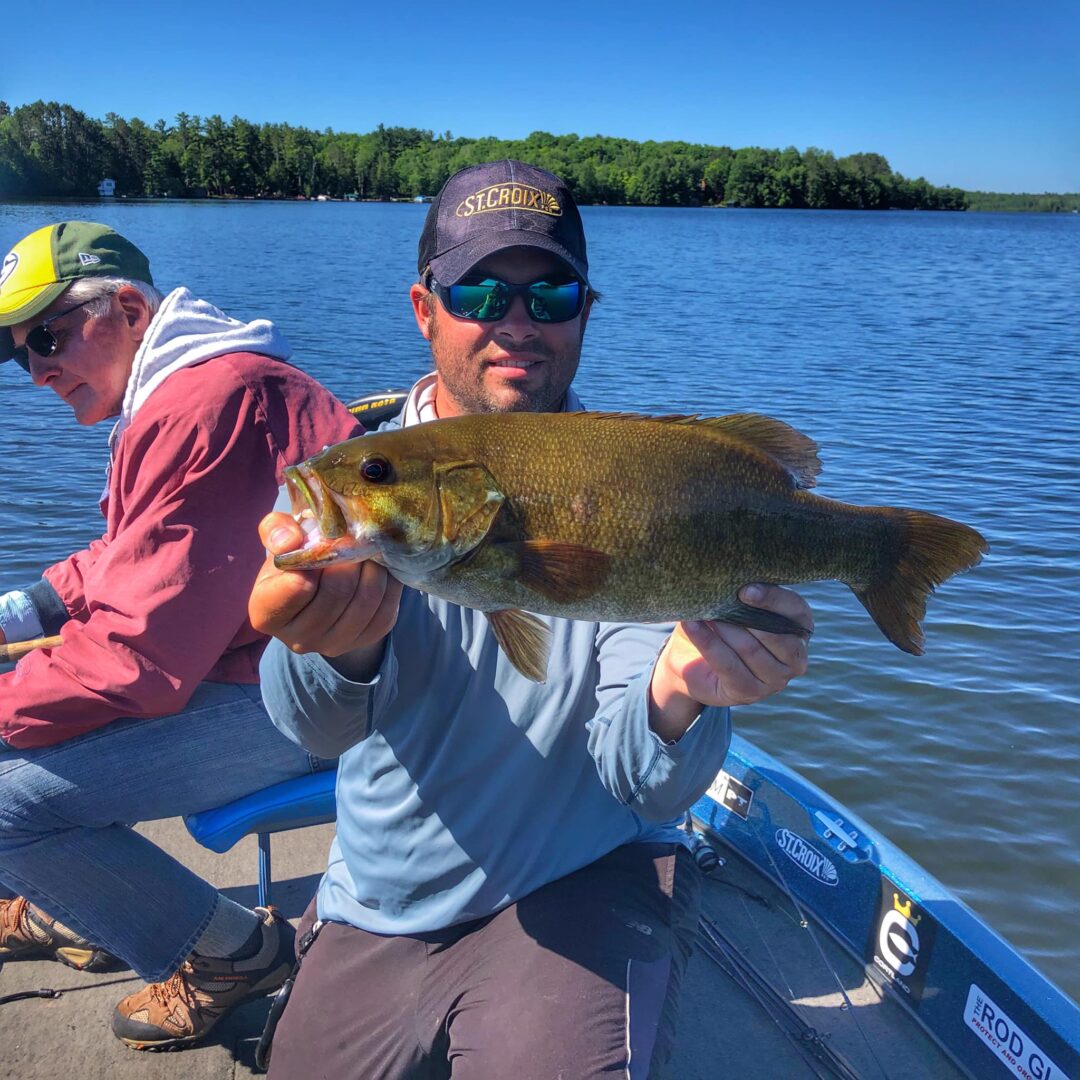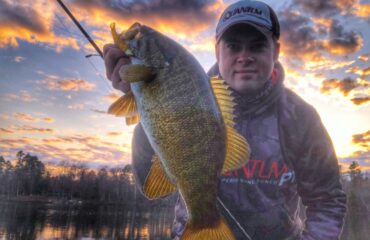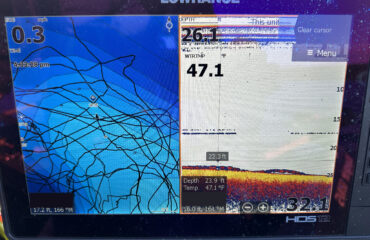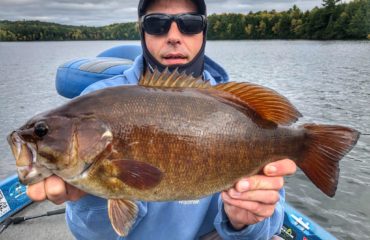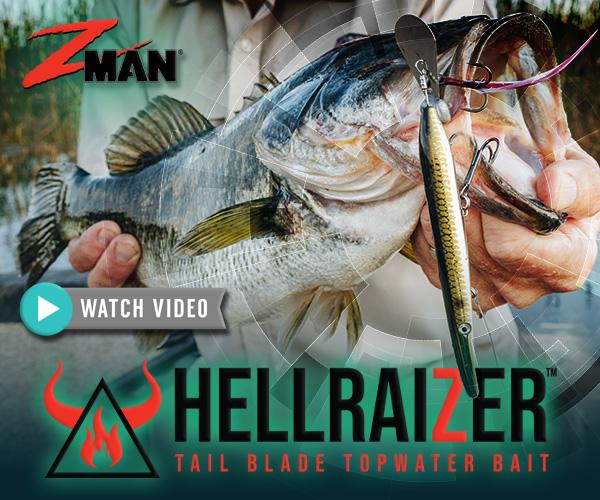Fishing The Post-Spawn Flats
When seeking quality post-spawn fish in June, I turn to the largest and deepest lakes in the region where we target their expansive flats and look for very good near-shore habitat.
Just days after the spawn, big smallmouths can be cruising in wolfpacks in depths as shallow as only a few feet deep. Catching these mobile fish is possible by staying mobile yourself, raising up the trolling motor, quietly and stealthily following them around, and casting with search baits that includes topwaters, fluke minnows, hair jigs, and swimming grubs.

A secondary pattern I find this time of year happens atop the shallow mid-lake structures near deep open water, that get used heavily. Some leftover fish can still be spawning in these locations while others might be already using them as holding and feeding areas.
In these lake regions, my top fish catcher is the reliable tube jig. Smallmouths often want them meticulously scurried and dragged along the bottom, or even dead sticked. By now, crayfish are near the top of their diet.

Under most circumstances, when wanting to fish quickly, I use a squarebill crankbait to search out cover and structure, looking for a reaction bite yet at the same time covering water in search for actively feeding fish. I don’t fish them slowly as one normally would with a fiberglass rod and a lower gear ratio reel. Rather, I power my way to ferocious strikes with speed and power. For this specific technique, I prefer fishing with a “power”reel with a 6:3.1 gear ratio paired with my 7 foot 2 inch St. Croix Legend Glass (LGC72MM).
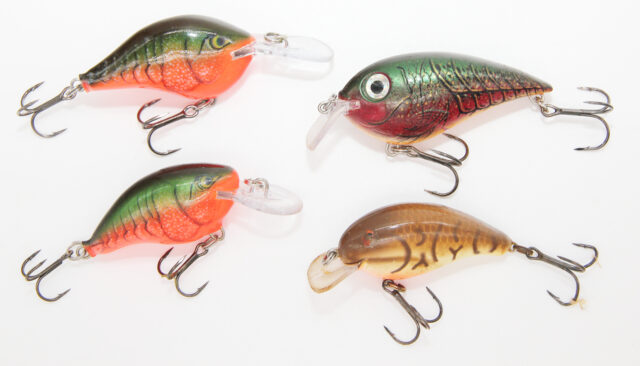
Modern crankbaits are available in all shapes and sizes, representing all types of bass forage and enabling bass anglers to cover all the bases when it comes to locating and catching fish. As we know, the favorite forage right now will be crayfish. Thus in my opinion, nothing works better than correctly matching the hatch.
St. Croix Rods
Mojo Bass Hair Jig (MJS76MLXF)

![]()


